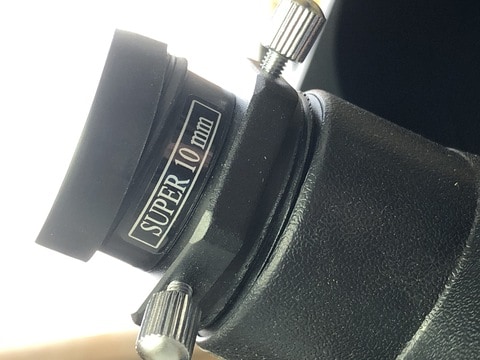There are a lot of acronyms associated with a Telescope, and this one in the midst of all the others can seem confusing. However, let’s define it.
The “mm” on a telescope and on eyepieces is in reference to milli-meters. Most measurements are given in metric form on a telescope. This is done for easy math and quick solutions to equations.
Let’s dig in to “mm” a little more. Below there are sample equations and more detail…
Specifically, With Eyepieces the mm Means…
Specifically, on the eyepiece itself, the millimeter is in reference to the focal length of the eyepiece. The focal length is where the distance from the lens to where the light reaches a convergence point is measured.
The bigger the number the longer the distance. This is where it can get confusing sometimes, because the smaller the number the shorter the distance and therefore the greater the magnification. Whereas, it would seem the other way around…the bigger the number the greater the possible magnification, but that is not the case.
With Telescopes the mm Means…
Telescopes have several dimensions that are usually measured in millimeters. The telescope tube or body has a focal length just like an eyepiece mentioned above. However, this measurement follows common sense thinking and the bigger the number, the higher the magnification possible. 
The diameter, or more specifically called the aperture of your telescope can be measured in inches or mm, but it is common practice to use mm until it starts getting over 5” or so.
With these two numbers you can calculate the F ratio which is arguably the most important number to know on your telescope.
Other Common Telescope Terms Measured in MM
While there are very many telescope terms, or as we mentioned above acronyms, we’re going to list a few of the ones that are more important to a possible beginner that are easier to figure out when using mm.
Eye Relief = eyepiece (lens) diameter – 7mm
Magnification = focal length of tube / focal length of eyepiece
Exit Pupil diameter = aperture / magnification
Why mm and Not Inches
I don’t know the actual answer, however I believe it is because when you get down 2 eyepieces you can choose them by the millimeter. Doing the math, let’s say we have a 2 1/2-inch aperture telescope and a focal length of .256 on the eyepiece seems contrary doesn’t it?
examples:
so you don’t have to look it up… 1” = 25.4 mm
So, to figure magnification of a 1000mm focal length telescope tube, and an eyepiece with a focal length of 20mm. 1000mm/20mm=50, so 50X magnification. Learn about the telescope 50X rule here
In inches the equation would look like this: 39.37”/0.787”=50
So, you get the same answer, however you can do one in your head a lot easier than the other, well at least my math skills it is easier. 
Need More?
You may want to look at this article on Astronomy Formulas Explained with Sample Equations to help you in understanding how to get the most from your telescope.
Also, some other awesome articles you may find helpful:
Can I Use a Telescope with Corrective Wear or Glasses?
10 Best Barlow Lenses Both 1.25” and 2”, and Why I Would Buy Them.


